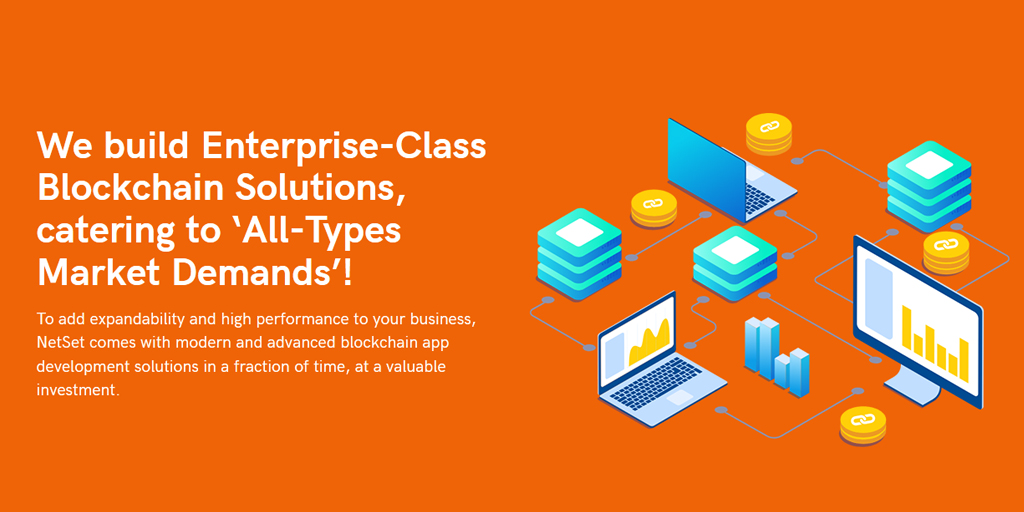API-Driven Payment Tools: Transforming Transactions with Speed and Security

Every time you tap your card or click 'pay now', theres a complex system working behind the scenes to ensure your transaction is seamless. At the heart of this efficiency lies API-driven payment tools, quietly revolutionising how businesses handle payments. These tools, whether it is Open Banking software or an accounting platform, are all about speed, flexibility, security, and creating a frictionless experience for both businesses and customers.
Whether youre running an e-commerce store or managing a subscription service, payment APIs give you the power to customise and scale your payment processes with ease. They integrate directly into your systems, simplifying everything from processing transactions to managing refunds. If youre looking to stay competitive in an increasingly digital economy, understanding how API-driven payment tools work could be the key to unlocking smarter, more efficient payment solutions.
Thoughts on API-Driven Payment Tools
API-driven payment tools significantly enhance transactional capabilities. You will find that these tools open doors to unparalleled flexibility in tailoring payment systems. Businesses can configure workflows, integrate with partner platforms, or even enable international payment channels, all through straightforward API calls.
Security takes a front seat in API-driven payments. With encrypted data flows and tokenisation protocols, your transactions gain robust protection against fraud. In the case that you're managing sensitive payment details, these tools can reduce compliance risks and ensure adherence to global security standards like PCI DSS. By building security into the API, processing payments becomes safer without sacrificing convenience.
Scalability stands out within API ecosystems. You might need solutions capable of adapting to evolving business demands. Whether you're handling seasonal spikes in an e-commerce store or expanding subscription services to new markets, these tools can support growth without overhauling existing systems. Embedded scalability ensures minimal disruption during transitions.
Operational efficiency improves with APIs. Automating tasks like payment authorisation, refunds, or reconciliation reduces manual errors. You will see faster processing times that save your team hours otherwise spent on tedious operations. Real-time reporting APIs add visibility, so youre always updated on cash flows and transaction statuses.
User experience becomes seamless with intuitive payment processes. APIs allow you to incorporate dynamic payment options like digital wallets and buy-now-pay-later services directly into your platforms. These integrations create smooth journeys for customers, which can drive return visits and improve overall satisfaction.
You might wonder how API-driven payments support customisation. The ability to offer tailored invoicing, regional payment options, or branded checkout experiences depends heavily on the flexibility of your chosen API. By using endpoints configured to your specifications, customer engagement aligns with your brand's voice and identity.
API-driven payment tools simplify complexity, ensuring businesses operate with higher reliability and precision. Whether youre focused on retaining competitive advantage or optimising finance workflows, these tools present direct and adaptable pathways to meet your objectives.
Key Features Of API-Driven Payment Tools
API-driven payment tools are designed to enhance the financial workflows of businesses. They deliver optimal functionality through features tailored specifically to scalability, integration, and security.
Seamless Integration
Seamless integration allows you to embed payment functionalities into your existing systems without disruptions. APIs streamline the connection to gateways, databases, and third-party tools, eliminating compatibility issues.
You might find solutions supporting various programming languages and frameworks, ensuring adaptability across platforms. Multiple endpoints, like customer authentication and invoice generation, simplify processes, making implementation efficient.
Scalability And Flexibility
Scalability ensures that your payment system adapts as transaction volumes fluctuate. Whether expanding internationally or managing seasonal demand, APIs evolve with your growth. Flexibility allows you to customise functionality, integrating methods like digital wallets or recurring billing. Your business gains the ability to meet customer preferences while accommodating unique workflows and regional regulations.
Security And Compliance
Security safeguards sensitive financial data, protecting your customers and business. Encryption, tokenisation, and PCI DSS compliance often feature within these APIs. You will notice options for fraud detection systems that monitor transactions in real-time. In the case that regulatory requirements shift, updates are frequently applied, maintaining compliance across jurisdictions.
Benefits For Businesses
API-driven payment tools offer businesses tangible advantages, streamlining operations and optimising customer transactions effectively. These tools enable precision, automation, and a seamless workflow tailored to your organisation's needs.
Improved Efficiency
Integrating API-driven payment tools transforms routine payment handling. Automated systems silently eliminate repetitive tasks, letting your team focus on strategic goals. Real-time processing keeps your transactions flowing without delays, while reporting functions display actionable insights instantly. You will find that this boosts workplace productivity and reduces manual input errors. Faster payment reconciliation and reduced dependencies on human oversight create a system built to scale.
Cost Savings
With API-driven tools, redundant processing steps are actively removed. Resource allocation simplifies when automation replaces labour-intensive operations. This reduces operational expenses, creating more room for investment in growth-focused areas. The elasticity of payment APIs helps you minimise expenses from scalability, dynamically adapting to increased transaction volumes without costly system overhauls. You will notice reduced fees through processing optimisation and integrated fraud-prevention measures, which mitigate financial risks effectively.
Enhanced Customer Experience
A smooth, intuitive payment process defines modern customer expectations. API-driven systems let you offer diverse payment options, meeting preferences from digital wallets like Apple Pay to regional payment methods. Customisable features allow you to align interfaces seamlessly with your brand, ensuring consistency and familiarity. In cases where flexibility is key, buy-now-pay-later choices integrate effortlessly, satisfying evolving spending patterns. These elements collectively build trust in your services, motivating repeat transactions and enhancing relationships over the long term.
Popular API-Driven Payment Tools In The Market
When deciding which API-driven payment tool suits your needs, you will encounter several standout options offering diverse functionality. Each serves unique use cases, ensuring flexibility and adaptability for your business.
- Stripe: Stripe provides robust APIs, enabling easy integration for payment processing. You will find support for various payment methods, such as credit cards, digital wallets, and bank transfers. Its developer-friendly documentation streamlines setup, while advanced analytics and customisation options let you align payment workflows with your business goals. Stripe also ensures compliance with global regulations, handling tax calculations and reporting requirements.
- PayPal: PayPal's API toolkit simplifies payment handling across e-commerce platforms and services. Offering REST APIs for both direct and subscription-based transactions, it supports features like currency conversion and fraud detection. You can extend its functionality to handle buy-now-pay-later solutions or integration with platforms like marketplaces. Developers will appreciate the broad SDK support for languages including Java, Python, and C#.
- Square: With Square's APIs, handling in-person and online payments becomes seamless. This tool focuses on unified sales data, providing insights on customer trends. Developers can explore options to integrate Square Reader hardware for contactless payments or build order management systems through its APIs. Square suits small to medium-sized businesses looking for simple yet scalable solutions.
- Adyen: Adyen caters to global businesses needing support for cross-border payments. Its APIs allow you to accept over 200 payment methods and multiple currencies, ensuring adaptability to different customer bases. It provides tokenisation for secure payment storage, while real-time reporting optimises operational oversight. Adyens flexibility extends to recurring billing and instant payouts.
- Braintree: Braintree offers customisable APIs focused on scalability. You might choose it to enhance recurring billing or to integrate native mobile payments into your app. It supports diverse payment methods like Venmo, local payment tools, and wallets. Detailed fraud detection systems and data encryption strengthen security, crucial for mitigating risks.
- Authorise.Net: Authorise.Net simplifies payment collection by integrating APIs for virtual terminals, invoicing, and subscriptions. You can optimise workflows tailored for SMEs needing secure payment gateways. Fraud prevention, tokenisation, and recurring transaction capabilities feature prominently in its API suite.
These tools differ in specialities but share common strengths like flexibility, global reach, and security. Choose based on your payment process goals and the level of technical control you require. You will find that many providers offer trial periods or detailed documentation to guide the decision further.
Challenges And Considerations
API-driven payment tools come with unique challenges that require careful planning and evaluation. Addressing these factors ensures smoother implementation and enhanced functionality.
Technical Complexity
Integrating payment APIs involves figuring technical demands that depend on your existing infrastructure. You might encounter compatibility issues when aligning these tools with legacy systems. Developers must also understand API documentation thoroughly to avoid errors during implementation. Without robust technical skills, debugging or maintaining the system might stretch resources or result in inefficiencies.
Customising payment solutions adds another layer of complexity. You will find that tailoring processes to unique business needs often requires advanced coding knowledge. Ensuring seamless functionality while balancing innovation and usability demands constant attention.
Potential Security Risks
API-driven payment tools handle sensitive financial information, making security paramount. Vulnerabilities in API endpoints expose your payment systems to potential attacks, such as unauthorised access or data breaches. If security protocols arent adequately robust, you might face repercussions from regulatory bodies and damaged user trust.
You should ensure encryption, tokenisation, and secure authentication processes are consistently applied. In the case that APIs connect with external systems, weak integration points create added risk. Proactively managing these measures limits liabilities and fortifies your defences.
Costs Of Implementation
Costs associated with API-driven payment tools extend beyond initial deployment. Licensing fees, infrastructure upgrades, and ongoing maintenance might affect your budget. If your organisation lacks in-house expertise, hiring specialists to oversee implementation could present additional financial challenges.
You may find sustaining operational efficiency requires regular updates and compliance with evolving regulations. These adaptations further increase expenses over time. Carefully evaluating whether API-driven tools align with your financial capacity can prevent unforeseen financial strain.
Last Thoughts
API-driven payment tools are transforming the way businesses handle transactions, offering a blend of efficiency, flexibility, and security that meets modern demands. By leveraging these tools, you can streamline operations, enhance customer experiences, and position your business for long-term growth.
As the payment landscape evolves, staying informed about emerging trends and carefully evaluating your options will ensure you maximise the potential of these technologies. With the right planning and implementation, API-driven payment tools can become a cornerstone of your digital strategy.


































